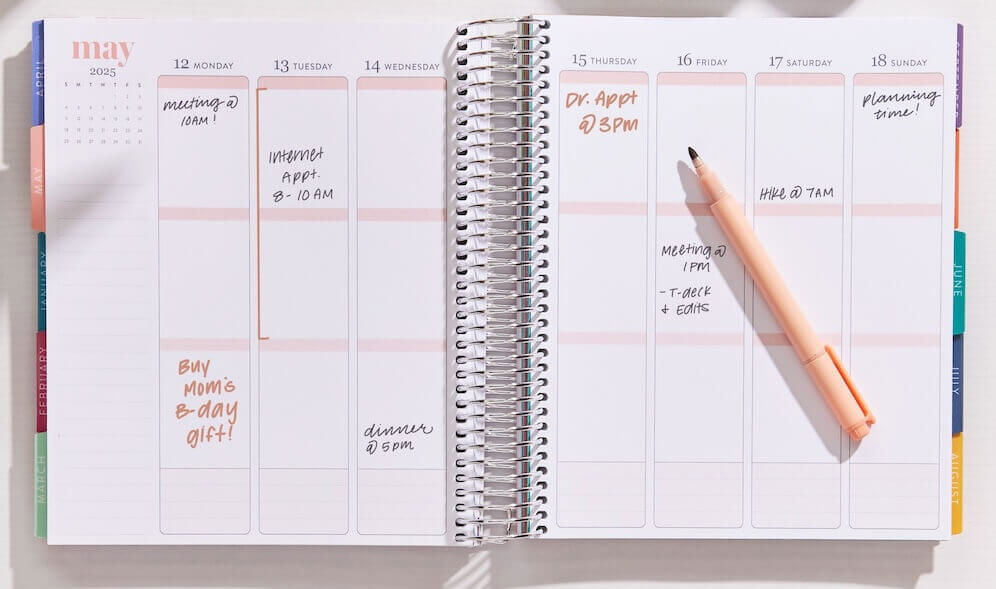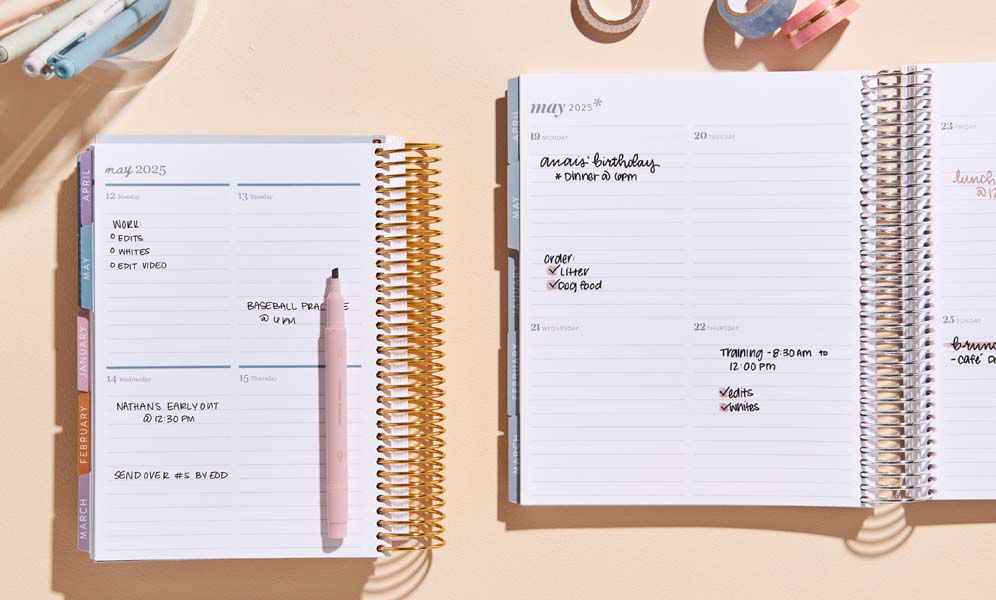Vertical vs. Compact Vertical LifePlanner™: Which Weekly Planner Is Better for You?
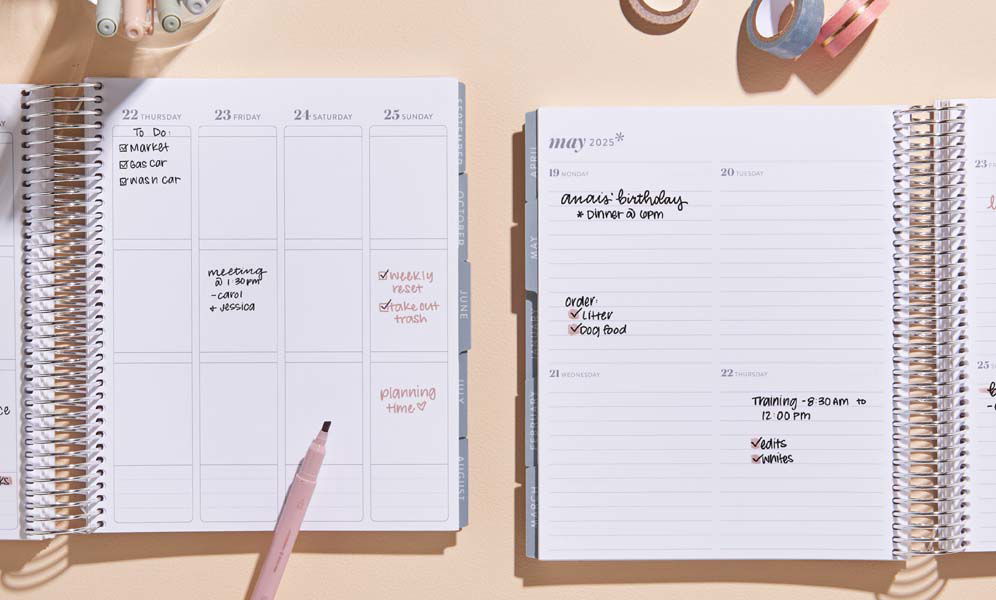
In the planner-verse, finding the perfect weekly planner can be as daunting as finding the perfect pair of jeans. But fear not! Our planning experts are here to guide you through the delightful planner layout options of our Erin Condren Vertical and Compact Vertical LifePlanners™, helping you discover the best planner that will give you that planner peace you seek.
No big deal, but . . . we'll also walk you through how to plan in each layout + share our favorite creative planner prompts to keep you motivated and inspired!
What Is a Vertical LifePlanner™?
The Erin Condren Vertical LifePlanner™ is a classic. This is the original LifePlanner™ that started it all. This best-selling weekly planner offers four vertical boxes for each day of the week (three blank, one lined), ready for you to fill with your plans, tasks, and dreams. It comes in two planner sizes: 7” x 9” and 8” x 10”. It's a tried and true customer favorite, beloved by many for its flexibility and customizable organization.
What Is a Compact Vertical LifePlanner™?
You could say the Compact Vertical LifePlanner™ is the sleek cousin of the Vertical LifePlanner™. This little gem combines the best of both worlds, with vertical sections and horizontal lines. Each day gets its own column, lined and ready for your pen to dance across. It comes in two sizes: A5 (5.8” x 8.3”) and 7” x 9”. It's customizable, it's versatile, and it's perfect for those who crave a balance between structure and freedom.
Pros and Cons of Using the Vertical LifePlanner™ vs. Compact Vertical LifePlanner™
So, what sets these two best-selling weekly LifePlanners apart? Let's break it down:
Vertical LifePlanner™ Pros and Cons
Pros:
- Flexibility in how you use those four daily boxes.
- Perfect for categorizing your day and prioritizing tasks.
- A canvas for creativity, with endless possibilities.
- Ideal for those who love to track habits or separate responsibilities.
Cons:
- Limited writing space, which might not suit those with big handwriting.
- No lines in three out of four of the boxes can make it tricky to write full sentences.
- Beginners might find it challenging to optimize those three blank boxes.
- Not available in the compact A5 planner size. (Smallest size available is 7” x 9”.)
Compact Vertical LifePlanner™ Pros and Cons
Pros:
- Lined sections for those who love a bit of structure.
- More writing space than its vertical counterpart.
- Perfect for to-do lists and checklist-style planning.
- Beginner-friendly, with less intimidating space to fill.
- Comes in two sizes: compact A5 (5.8” x 8.3”) and roomier 7” x 9”.
Cons:
- Busy days might leave you craving more space.
- Weekends might feel a tad cramped for some.
- The grid-like layout might not vibe with everyone's planning style.
Which Weekly Planner Is Right for You?
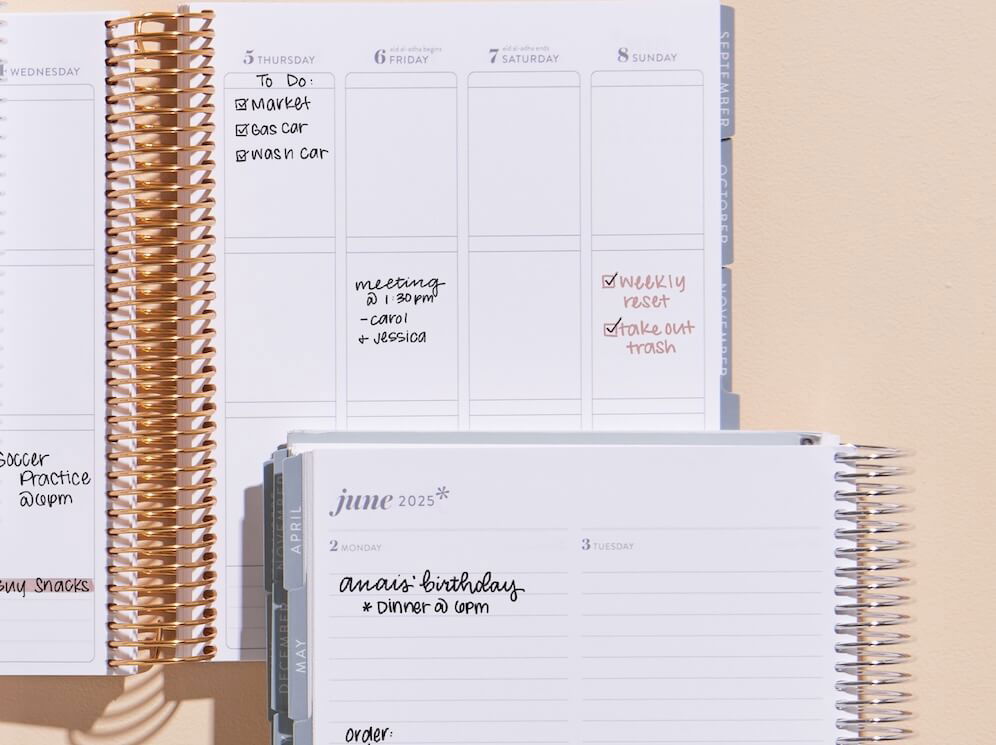
So, who should scoop up the Vertical LifePlanner™, and who should cozy up to the Compact Vertical LifePlanner™?
The Vertical LifePlanner™ is perfect for the free spirits who crave endless planning possibilities. Whether you're a time-based planner, a category connoisseur, or just enjoy a blank canvas, this layout has your back.
On the other hand, the Compact Vertical LifePlanner™ is a dream for those who like a bit of structure but don't want to feel constrained. If you love lists and appreciate daily lined sections in a weekly spread, this planner layout is calling your name.
How to Plan in a Vertical LifePlanner™

For those who are team Vertical LifePlanner™ – or are curious how to plan in this popular layout – below are our top planning tips and tricks from our experts. Or keep scrolling until you reach our tips and prompts for the Compact Vertical LifePlanner™.
Step 1: Define Your Weekly Planning Approach.
- The Vertical LifePlanner™ has the most versatile planner layout so you can customize how you organize your weeks.
- With open vertical boxes for weekly planning, decide how you want to plan each week.
- Popular ways to organize weekly to-dos, meetings, appointments, and more include by time of day, by priorities, by subject, by person (for those managing family or team schedules), the planning possibilities are virtually endless.
- Use your monthly calendars (for recurring appointments, deadlines, and high-level planning) to guide and free up more space for more detailed planning in your weekly spreads.
Pro Tip: Don’t be afraid to experiment with different ways of planning each week until you find your planning style.
Step 2: Get the Most Out of Your Vertical Layout.
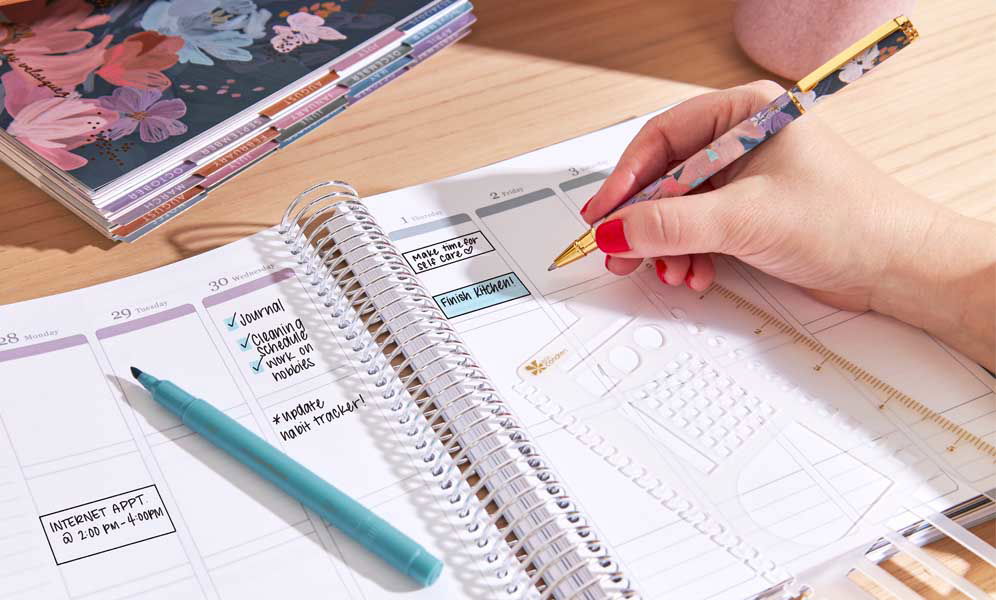
- Create your own abbreviation system for commonly used tasks or events. This helps save space and allows for quick jotting down of information within the narrow vertical boxes.
- Make use of small sticky notes as overlays on your vertical sections. This enables easy adjustments and additions to your schedule without rewriting or cluttering.
- Use the blank vertical boxes for mini bullet journaling (you can even add your bullet journaling key in the margin for quick reference) to fit more planning with less clutter.
Pro Tip: Don’t forget the white spaces in your planner. Jot down inspirational quotes, affirmations, doodle, decorate with stickers, anything you like. Unless white space makes you happy. In that case, strategically leave them blank and enjoy the extra breathing room!
Step 3: Embrace Flexibility and Creativity.
- Adjust and evolve your planning approach as needed throughout the year.
- Adapt to seasonal shifts. Utilize the vertical boxes to organize summer activities and shifts in schedules (same goes for fall and holiday shifts).
- Explore different planning techniques to accommodate new responsibilities or to find your unique planning method.
Step 4: Explore Additional Planner Features.
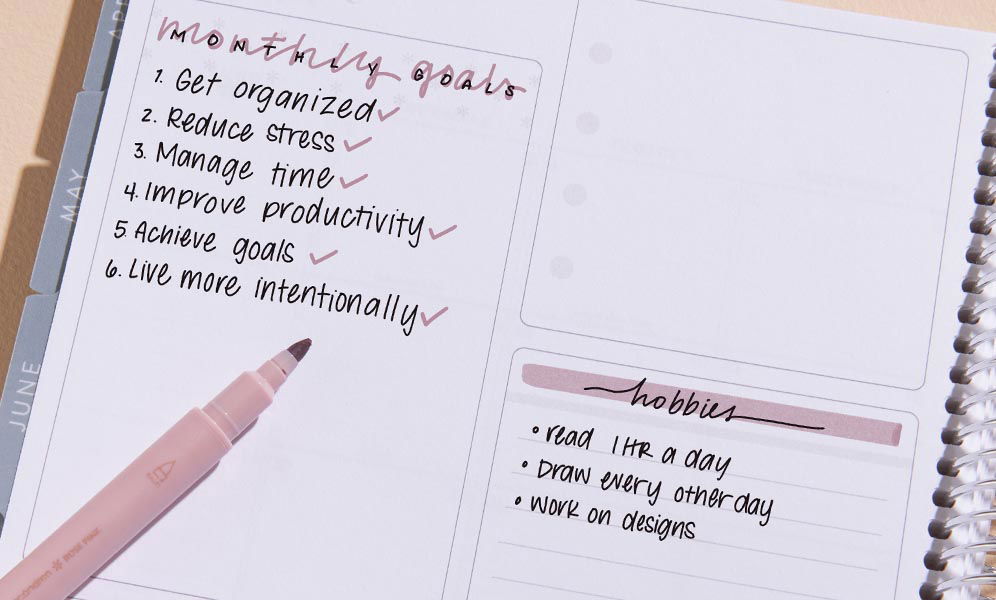
- Don't hesitate to experiment with the various features of your planner to enhance functionality and organization.
- Use the customizable 12-box spread to create a vision board, set yearly goals, map out vacations for the year, get as creative as you like.
- Utilize the monthly productivity pages to track habits, set monthly goals, and more.
- Use the note pages throughout your planner to journal, extend your planning, make grocery lists and meal plans, take notes, and more.
Step 5: Use the Strategic Lined Sections.

So, there are some horizontal lines in the Vertical LifePlanner™ (in addition to the note pages)!
- Take advantage of the narrow lined section on the side of each monthly calendar to record monthly wins, note monthly priorities, write recurring tasks, and more.
- You can also use the lined section in the left margin of the weekly spreads to track weekly productivity and habits, highlight important notes, and more.
- Use the small lined boxes at the bottom of each daily column in the weekly spreads for setting intentions, jotting reminders, micro-journaling, or noting surprise to-dos!
Pro Tip: Utilize the yearly overview spread for scheduling future appointments/events. Highlight and note them there for easy transfer to your new planner when needed.
10 Creative Vertical LifePlanner™ Planner Prompts
In addition to the prompts embedded in the five planner setup steps above, here are more Vertical LifePlanner™ prompts to fuel your planning journey:
- Ascending Action: Plan your week's journey upwards, utilizing the vertical layout to map out your progression towards success.
- Visual Map: Incorporate a visual map or mind map into your Vertical LifePlanner™ for brainstorming, project planning, or goal visualization.
- Top 3 Planning: Label each day's boxes with the top three priorities to keep your planning focused.
- Time-Based Organization: Use Morning, Afternoon, and Evening labels if unsure how to categorize tasks, ensuring efficient time-based planning.
- Category Experimentation: Experiment with organizing daily boxes into different categories like Work/Home/Misc, Meetings/To-Dos/Self-Care, or Urgent/Less Urgent/Nice to Have.
- Multifunctional Tracking: Tailor the Vertical LifePlanner™ for tracking projects, goals, and habits by assigning boxes to different aspects of life.
- Memory Keeping: Record plans, trips, occasions, and memories using monthly and weekly spreads, embellishing with stickers for a keepsake book.
- Health and Wellness Tracking: Utilize the planner for health planning, tracking treatments, nutrition, workouts, and progress towards wellness goals.
- Quote Inspiration: Find a motivational quote and write it across the top of your weekly spread to keep you inspired.
- Mindfulness Planning: Set daily intentions, log gratitude, and journal for mental health to transform your planner into a mindfulness tool.
How to Plan in a Compact Vertical LifePlanner™
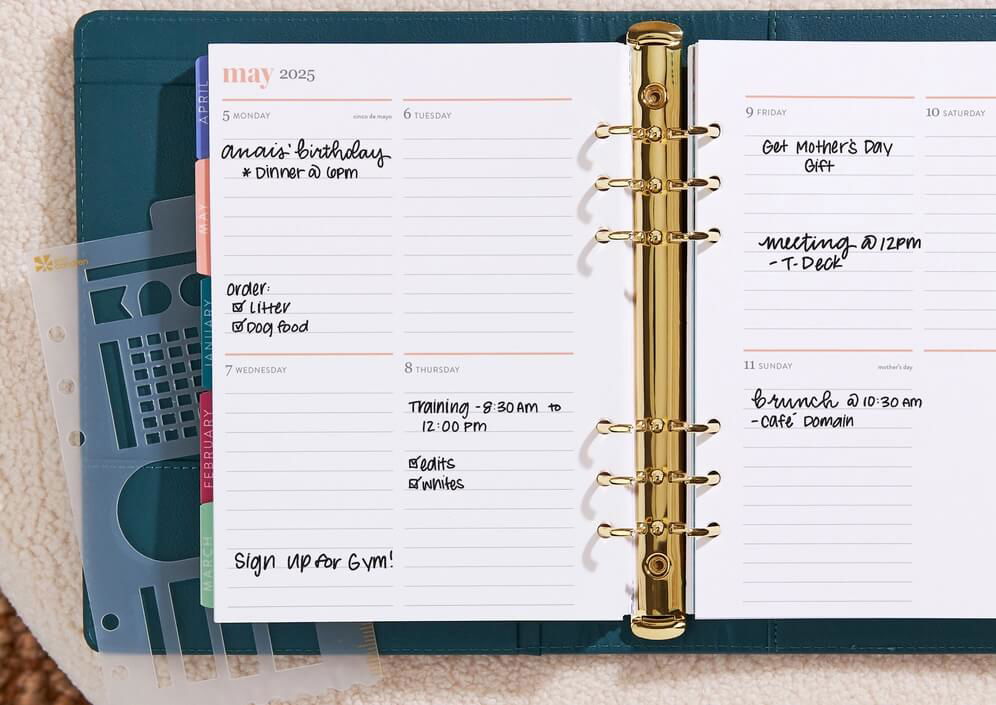
If the Compact Vertical LifePlanner™ is more your style, here are some tips to help you make the most of its streamlined layout:
Step 1: Tackle Daily Tasks.
- Make the most of the vertical lined sections for your daily appointments, to-dos, and errands, ensuring maximum productivity.
- Prioritize tasks by importance and break them into actionable steps, setting yourself up for success.
- Assign specific time slots to tasks, optimizing your time management and productivity.
- Wrap up your day by reviewing your list each evening to ensure nothing falls through the cracks.
Pro Tip: For any tasks on your list that you couldn’t complete, pencil them in for the next day (or use a sticky note). That way, any unfinished business is already on tomorrow’s list (and not taking up space in your head all night).
Step 2: Hack the Hourly Hustle.
On days packed with appointments and tasks, seamlessly transition your planner into an hourly schedule to maximize productivity.
- Convert a section of your planner into an hourly overview, allocating each vertical column to a specific hour of the day.
- Use the horizontal lines within each column to detail appointments, meetings, and tasks scheduled for each hour.
- Leverage this hourly layout as a clear roadmap for your day, ensuring that no minute goes to waste and allowing you to stay on track even during the busiest of days.
Step 3: Utilize Monthly Calendar Planning.
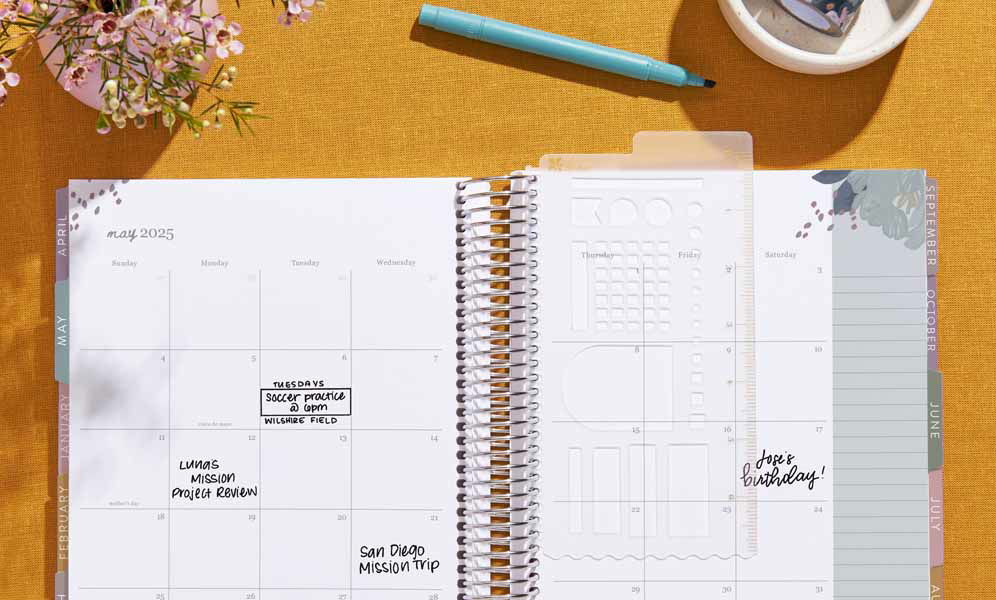
- Plan ahead for upcoming events, appointments, and deadlines using the monthly calendar.
- Keep your monthly calendar updated to stay on top of recurring due dates and manage your schedule effectively.
- Sync your monthly calendar with daily and weekly plans for seamless organization and coordination.
Step 4: Stay Flexible.
- Give yourself grace – not everything goes as planned.
- Create space in your plans for life’s surprises, embracing spontaneity and adaptability.
- Check in with your planner often and adjust your schedule and tasks as needed.
- Maintain a flexible mindset to navigate changes gracefully while staying focused on your goals.
Pro Tip: If you’re new to planning, or new to this layout, start off planning in pencil or use erasable ink. Correction tape, stickers, and sticky notes can also hide a multitude of mistakes and schedule switch-ups!
Step 5: Use Your Planner as a Creative Outlet.

- Journal reflections, track goals, and personalize with doodles or quotes to ignite creativity and motivation.
- Infuse creativity by setting weekly themes, keeping your planning fresh and exciting with focused goals or habits.
- Use open planning space for notes, quotes, sketches, or leave them blank to create a calming space in your plans.
Pro Tip: Add organization and style with decorative washi tape, assigning colors to categories, and creating extra sections for projects and more using the snap-in stencil ruler.
10 Creative Compact Vertical LifePlanner™ Prompts
Here are fun and functional Compact Vertical LifePlanner™ prompts to get you started, and keep you motivated:
- Tech-Free Time: Schedule breaks from electronic devices in your planner to prioritize offline activities and enhance your well-being.
- Daily Affirmations: Cultivate positivity by incorporating daily affirmations into your planner, allocating space for new affirmations each day.
- Reflection and Journal Prompts: Foster self-discovery and growth by dedicating planner space to reflection prompts, using vertical sections for prompts and horizontal lines for your insights.
- Weekly Intentions: Align your actions with your values by setting weekly intentions in your planner, using vertical sections to list them and horizontal lines for details.
- Weekly Gratitude Grid: Practice gratitude by using the daily lined columns in the weekly spreads (or dividing your note pages into daily grids) for recording one thing you're grateful for each day.
- Mindfulness Moment Prompts: Integrate mindfulness exercises into your week by scheduling daily prompts in your planner for short mindfulness practices.
- Vision Board Updates: Keep your visual goals fresh by scheduling weekly updates in your planner, using it to brainstorm new goals and visualize your aspirations.
- Creative Challenges: Track weekly creative challenges in your planner to unleash your imagination and add excitement to your planning routine.
- Bucket List Moments: Plan future experiences by creating a bucket list section in your planner and selecting one item each week to pursue.
- Easy Project Management: Break down large projects into smaller tasks, assign specific steps or phases to each day or week, and track your progress using the productivity dashboard or note pages for accountability and momentum.
Whether you prefer the versatility of the Vertical LifePlanner™ or the streamlined layout of the Compact Vertical LifePlanner™, there’s a planner designed to make your life easier.
Customize your new LifePlanner™ by choosing your cover design, then interior design, select your layout preference, your calendar dates, and even personalize it if you like!
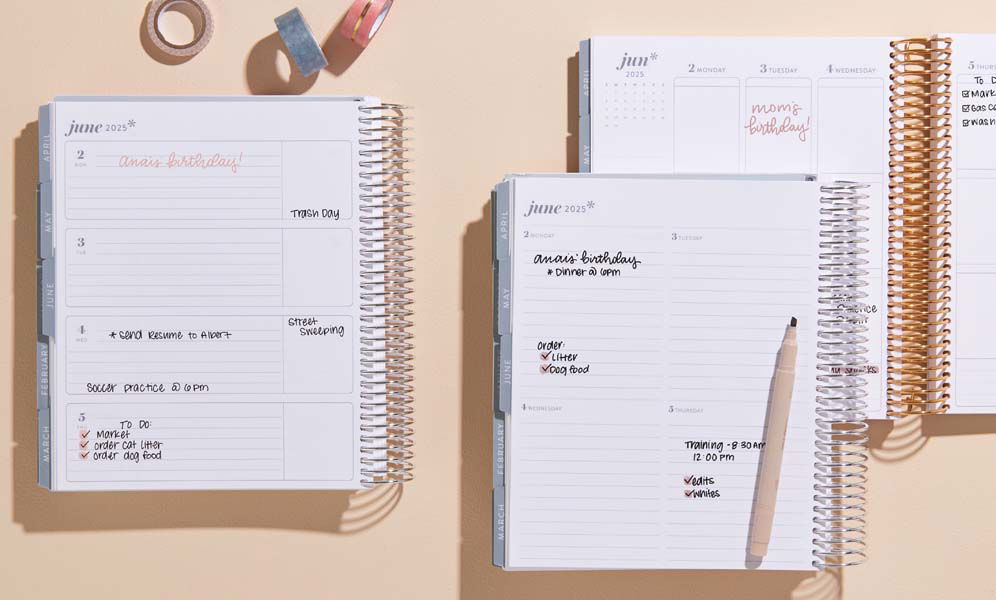
In the market for multiple planners (for yourself or as gifts), or curious about other planner types and how to organize your planner? You’ll love these popular planning guides:
